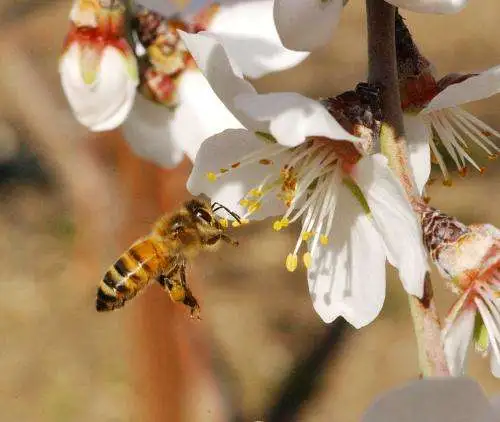



Article by: Hari Yellina
The almond business is hurriedly coordinating with state governments to relocate thousands of beehives throughout the nation in order to prevent a catastrophic crop loss costing $500 million. The pollination of the nut depends entirely on European honey bees, however because of a varroa mite invasion in NSW, approximately half of the country’s commercial beehives are under lockdown, and no hives are allowed to be transferred within or across the state. In order to pollinate the over 60,000 hectares of almonds that are produced along the Murray and Murrumbidgee rivers, which have plantations from Griffith in New South Wales to Adelaide in South Australia, 300,000 hives are required in August. 150,000 of those hives are from NSW, according to Tim Jackson, chief executive of the Almond Board of Australia, and they must be set up before the trees begin to grow.
The earliest we can relocate the bees to get them ready to go when the blossom occurs is July 24, so that date has been circled as D-Day, according to Mr. Jackson. “The problem right now is that up to $500 million worth of almonds won’t be pollinated if a special provision isn’t granted for almond pollination. The chance to grow a harvest is lost after the blossom has faded.” As part of a multi-state working group that was originally established to organise cross-border pollination during COVID-19 border closures, the almond industry is closely collaborating with the NSW government to design a permit system that will allow some beehives to make the annual pilgrimage.
We’re essentially attempting to address the same problem as COVID-19, but we’re adding a biosecurity component, Mr. Jackson added. We already have ties with governments, and they have faith in us to act morally since we’ve been cooperating for the previous two years. Mr. Jackson said apiarists would need to be aware of the health of their hives before transferring them and give state authorities notice of their locations for traceability purposes. The specifics are still being worked out. The state governments of Queensland, South Australia, and Victoria all acknowledged that they were coordinating closely with almond growers to give priority to hive movements for pollination services.
A lengthy beehive lockout in NSW could have serious consequences for 35 sectors, including those that pollinate apples, stone fruit, cherries, blueberries, and melons, in addition to the almond crop. If the NSW standstill order is upheld and the almond pollination permit is successful, other sectors will follow suit. According to Peter McDonald, president of the Victorian Farmers Federation’s beekeeping branch, “almonds are just the first cab off the rank; everything flows on after in the pollination season.” Stone fruits, pears, and cherries come next in September, followed by canola seed. ‘Macadamias start in and around August, and blueberries start around now in northern NSW and Queensland.’
The last continent to be free of the Varroa mite is Australia. The avocado business has concluded research into other pollinators in anticipation of a potential pandemic. John Tyas, chief executive officer of Avocados Australia, stated that “we need to control the risk.” “During flowering, growers frequently observe a large variety of insects in their orchards, but we were unsure of their efficacy as pollinators. We now have access to the data. Hoverflies made up the vast majority of pollinators in certain places, while common house flies made up a sizeable portion in others.